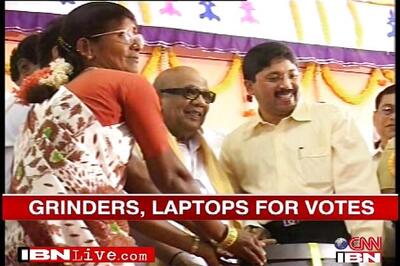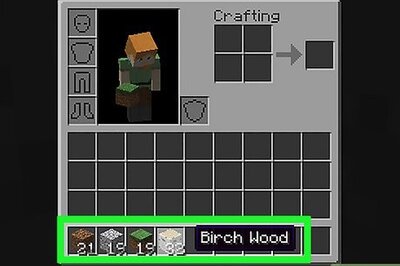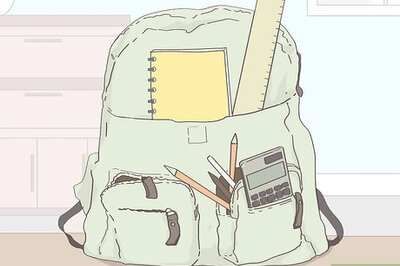
views
A train unknowingly chugs its way through the railway track that parts ways into Hindustan and Pakistan a little ahead. Gandhiji, waving the danger flag, stands on one side, to stop the train well-before it reaches the fork. Cartoonist Shankar had well captured Gandhiji’s attitude towards the partition of India and the possible outcome of the bifurcation in the cartoon titled ‘Danger Signal’. Including this, a number of master strokes by the maverick cartoonist are neatly lined up inside Kanakakkunnu Palace. The three-day cartoon-photo exhibition, arranged on the sidelines of the 110th birth anniversary celebrations of cartoonist Shankar, is jointly organised by Information and Public Relations Department (I&PRD), Government of Kerala and Kerala Cartoon Academy.
The cartoons take funny and sharp digs at the political situations in pre and post-independence India; notably in Nehru’s India. A good number of them carry captions or catchwords conveying the context in which the cartoons were drawn. “These cartoons are of course part of the history of the country. The explanations do help people, especially students, to understand them in a better way,” says V R Ajith Kumar, deputy director of I&PRD.
The collection on display begins with ‘In Situ’, a cartoon on a British Parliamentarian’s speech at the House of Commons and ends with the one on Nehru which was also Shankar’s last. Also seen is a work portraying Shankar in cartoonist Kerala Varma’s view. In between, each cartoon brings in a number of subjects that may raise concern in the onlooker. ‘The Quality of Mercy’, a cartoon dated November 16, 1958, shows a group of leaders lined up atop a balcony shedding tears, which rain down on the poor shanties beneath. The pseudo concern expressed by the politicians over the plight of the less fortunate is communicated here.
In ‘Wait for the Rope Trick’ we can see a funny depiction of Sir Stafford Cripps as a snake charmer; Gandhiji standing before him smiling and a group of people watching the scene. And the footnote underneath says - Sir Stafford Cripps arrived in India in March 1942 bringing a package proposal from Churchill. Cripps trying to perform the rope trick with his proposals.
“All these cartoons clearly convey how well Shankar made observations on situations and even on the appearance and mannerisms of each political leader. These cartoons, therefore, are good study materials from various angles,” says cartoonist J P Nirmalagiri. Other than Gandhiji and Jawaharlal Nehru, it is Indira Gandhi who appears frequently in the cartoons on display. All four among the five photographs are frames from Shankar’s personal life. In the latter, Shankar is seen sitting with a row of dignitaries at a function.
The exhibition inaugurated by Finance Minister K M Mani on Monday will conclude on Wednesday.




















Comments
0 comment